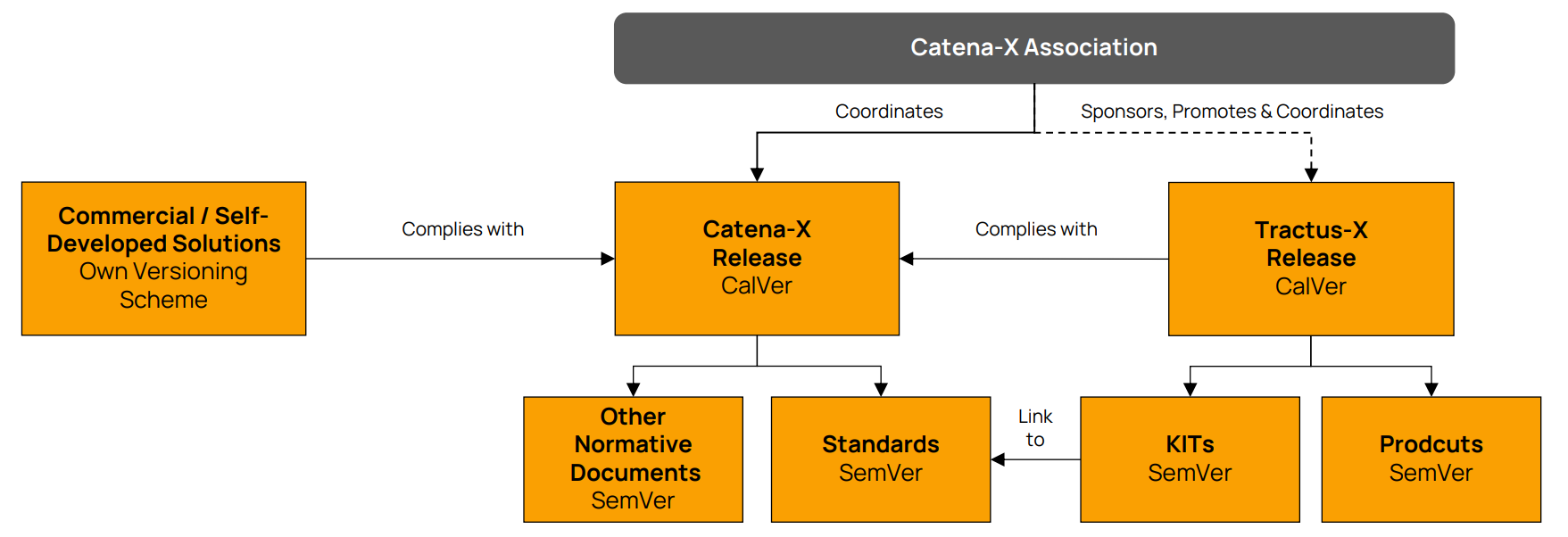How: Life Cycle Management
Managing versions and changes of different artifacts in federated data spaces is critical to ensure compatibility, interoperability, and security. The life cycle management of the Catena-X ecosystem is coordinated by the Catena-X Association and includes the releases in the Catena-X Association and in the Eclipse Tractus-X Project (see Figure Overview Life Cycle Management). It is planned to provide quarterly releases including one major and three minor releases per year. Both releases follow calendar versioning (see CalVer), whereas their artifacts such as standards, normative documents, products, and KITs follow semantic versioning (see SemVer). To ensure backward compatibility in the future (see Chapter Backward Compatibility), versioning and passing of predefined test cases of each individual artifact is mandatory.
 Overview Life Cycle Management
Overview Life Cycle Management
The Catena-X Association release includes all binding and certification-relevant artifacts such as standards (e.g., API-specifications, semantic models) and normative documents for all data space participants. The Tractus-X release contains all open-source products (including services or helm charts) of the cxOS and business applications as well as KITs. In addition, there are various commercial or self-developed solutions for business applications and services following individual release cycles and versioning schemes.
Both the Tractus-X release and any commercial or self developed solutions must adhere to Catena-X standards and other relevant normative documents.
Open-source products are required to fulfill the Tractus-X release guideline(TRGs) and take part in our integration tests to be part of a quarterly Tractus-X release. For critical issues (e. g., security issues), hot fixes may be released to fix a bug in the active Catena-X operating system that interrupts the normal release cycle.